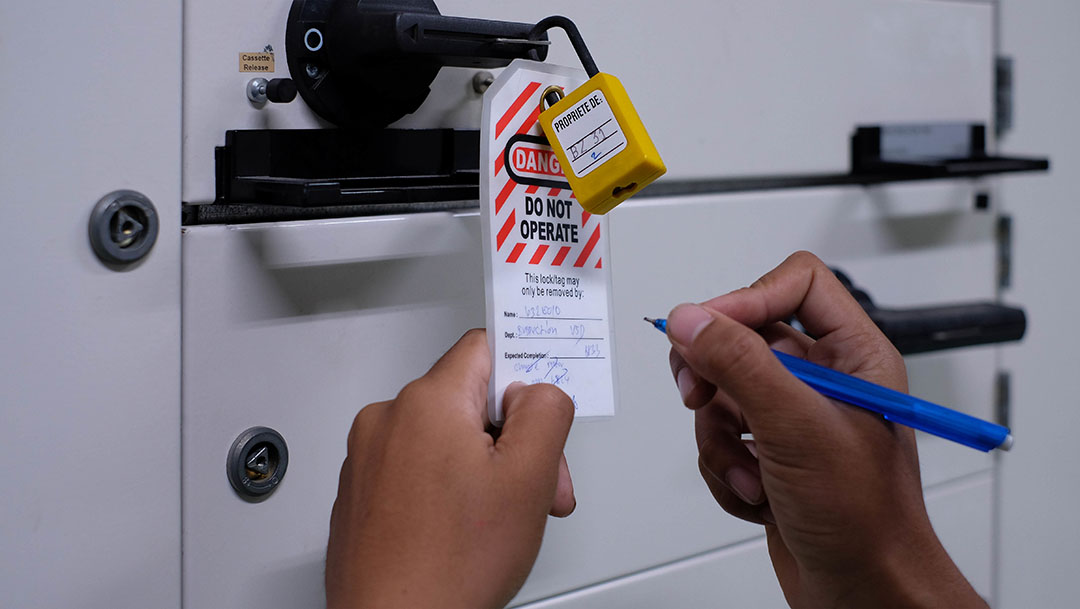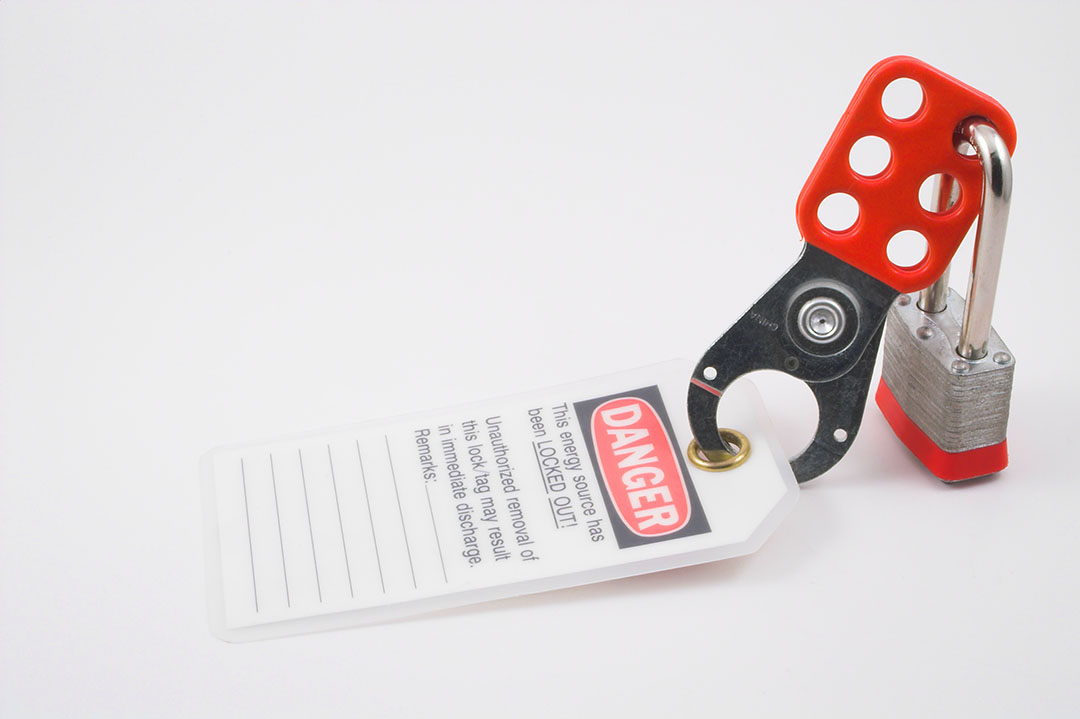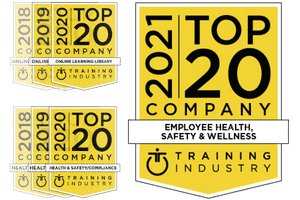What is Lockout/Tagout?
In any environment, keeping machinery properly maintained is crucial to ensuring effective and safe work is being done. However, servicing equipment requires employees to interact with machines in potentially dangerous ways. Lockout/tagout is a critical part of equipment maintenance in many industries. Both the employee servicing the machine and employees nearby can suffer serious or even fatal injuries, including electrocution, laceration or amputation, if machine parts move or otherwise become electrified while someone is servicing on the machine.

On average, employees injured from exposure to hazardous energy need 24 workdays to recover. Examples of hazardous energy release include:
- A steam valve being turned on, burning the employees servicing the pipe
- A jammed conveyor belt becoming free, crushing the worker who was clearing the jam
- A short in the internal wiring of a machine, shocking the maintenance worker
- Blades of a cutting machine turning on while being cleaned by an employee
Looking for more courses like lockout/tagout?
VIEW THE 800+ COURSES AVAILABLE!
Here are some real-life examples from 2017 of injuries commonly associated with lockout/tagout:
- Electric Shock – A supervisor and an employee were examining a breaker panel that contained a breaker that was not working properly. Neither employee deenergized the panel. When the supervisor attempted to pull out a breaker, an arc flash occurred, burning his face, chest, arms and hands.
- Amputation – An employee was servicing laundry equipment and did not lock it out before starting maintenance. His glove got caught in the machine and his right index finger was amputated as a result.
- Laceration – An employee was cleaning a roller of a machine, but it was still plugged in with no lockout/tagout measures in place. His right hand got caught in the moving parts of the machine and he needed to be hospitalized for severe injuries to his index, middle and ring fingers.
Lockout/tagout is a method to ensure all workers stay safe by preventing an accidental start-up or the release of stored energy. According to the Occupational Safety and Health Administration (OSHA), lockout/tagout procedures prevent about 120 fatalities and 50,000 injuries each year.
How Lockout/Tagout Works

There are two types of employees associated with lockout/tagout: authorized employees and affected employees. Authorized employees are the workers who put on locks and tags, service the machine and control the locks being used. Affected employees are those who either work directly with the machine being serviced or within the area where the maintenance work is taking place. Affected employees do not actively participate in maintenance procedures, but their work is affected while maintenance is happening. Before work on a machine begins, all affected employees must leave the immediate work area.
A lockout device is a physical lock that prevents the energizing of the machine. An authorized employee’s life or limbs could be at risk if someone alters or removes the lock, which is why only the authorized employee who placed the lock can remove it.
A tagout device is a warning tag attached to a machine, indicating the machine cannot be operated until the tag is removed. Only the authorized employee who placed the tag can remove it. A tag will include the phrase “Do Not Operate,” “Do Not Start” or “Do Not Energize.”The tag will state which authorized employee placed the lock and some tags might have a picture of the authorized employees as well.

Employees should never remove locks and tags they did not install. To ensure the safety of everyone in the area, all employees must comply with all lockout and tagout devices even if they look different than their facility’s usual devices, such as when outside contractors come in with their own devices.
Lockout/tagout procedures are vital to ensure the safety of all employees while a machine is being serviced. By honoring locks and tags, affected employees are protecting not only themselves, but also their coworkers. For more information about lockout/tagout, visit the lockout/tagout section of OSHA’s website.
Conclusion
During equipment or machinery maintenance, there is a danger of workers being injured by stored energy, or by someone reactivating the machine or equipment. These kinds of accidents can cause severe injury or even death. SafetySkills offers a Lockout/Tagout course to help employees understand the importance of lockout/tagout procedures and the consequences of not knowing.


